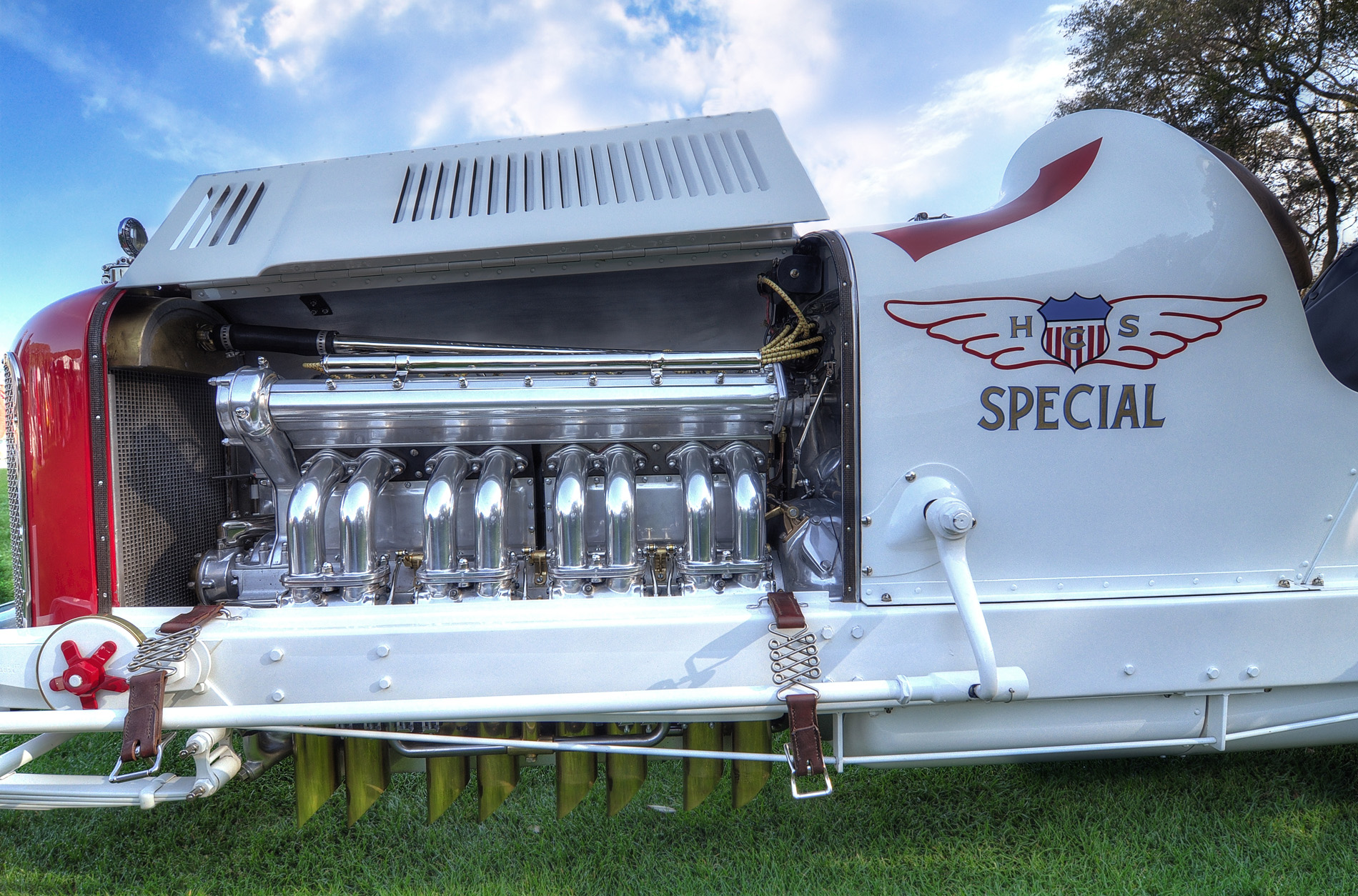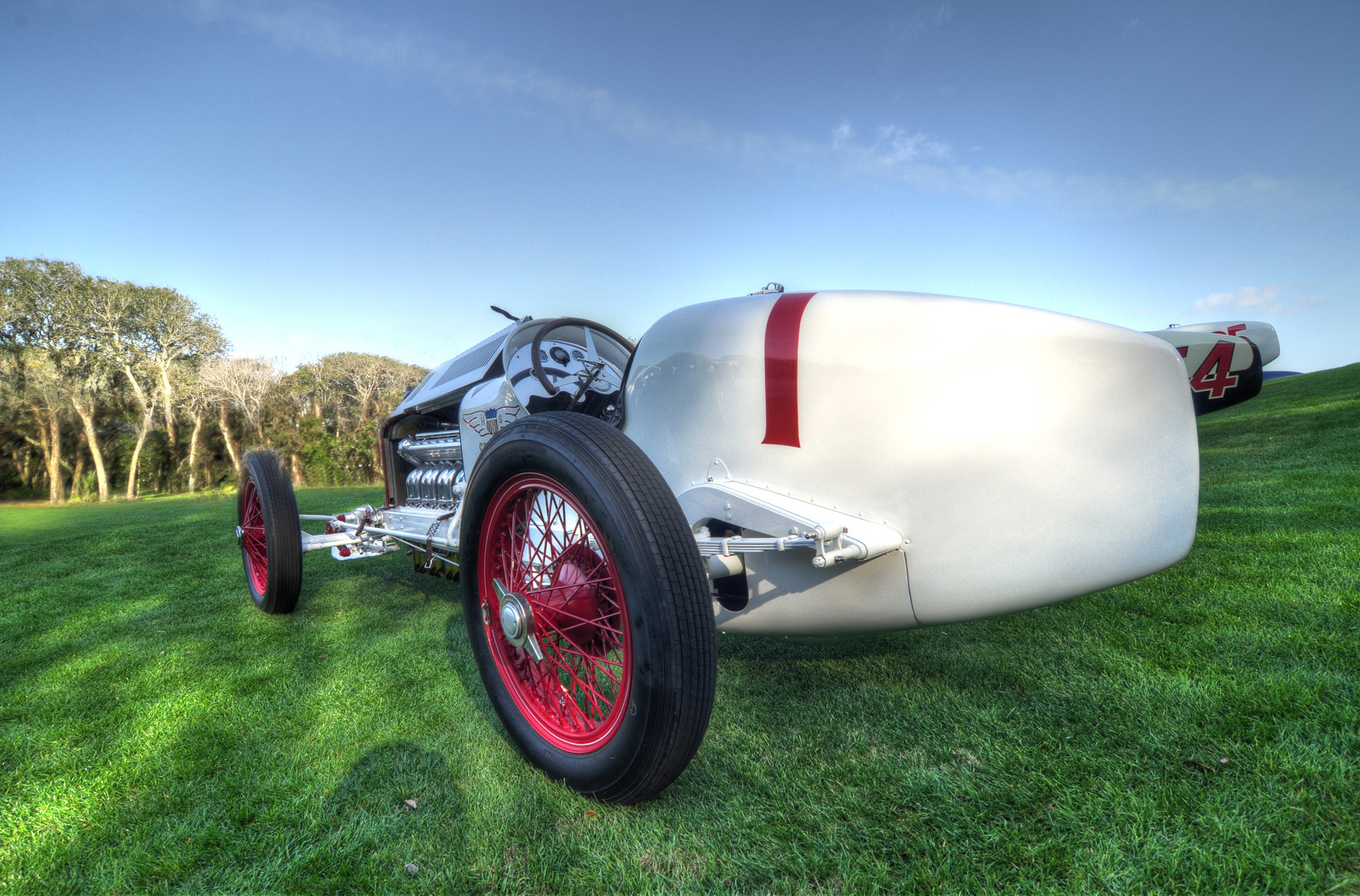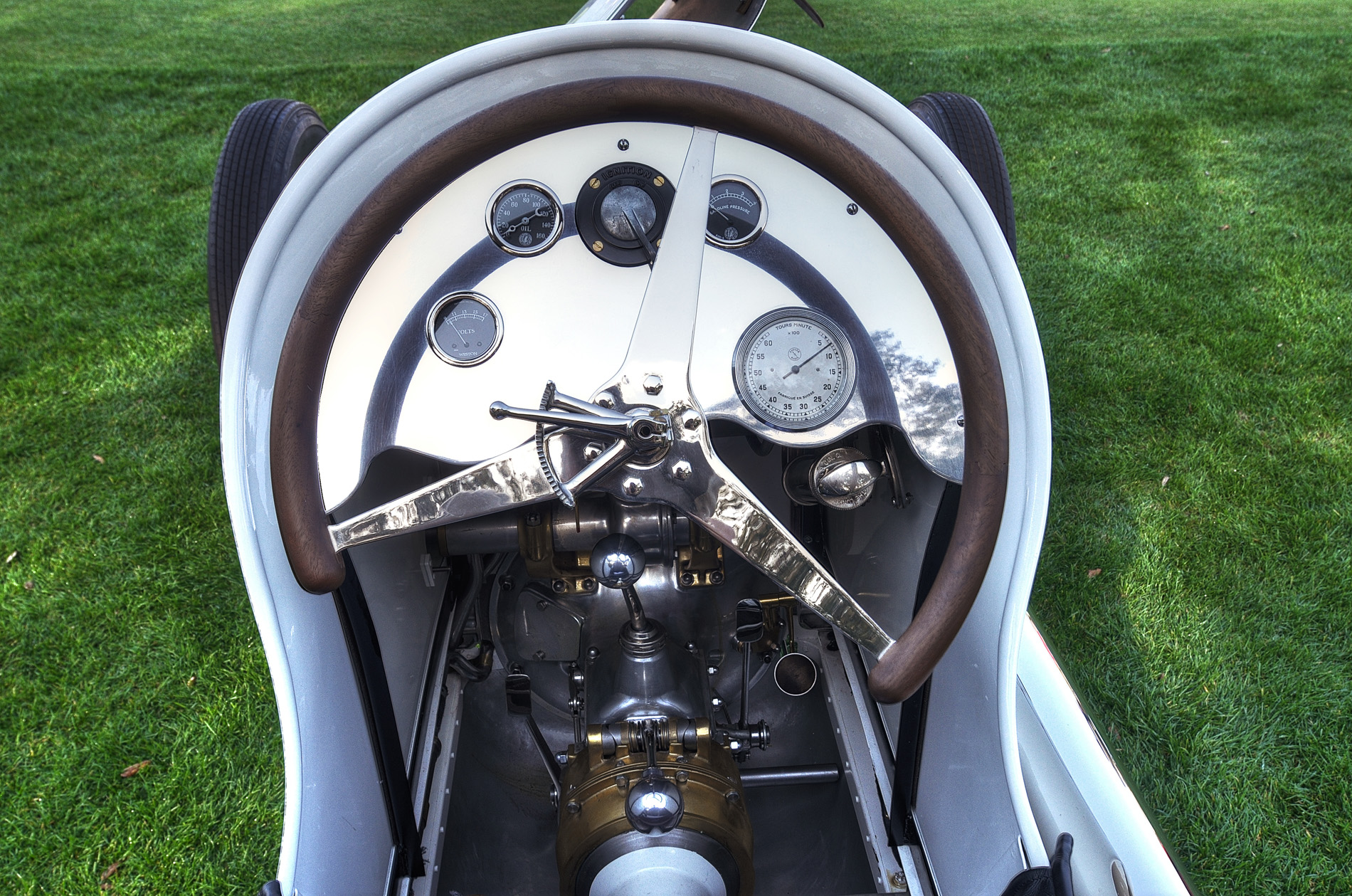
This 1922 Miller 122 is the first Miller 122 ever built. It was one of two 122’s belonging to Tommy Milton and was built to his specifications, in 1922. There were seven low radiator chassis built by Harry Miller and this body is the only one surviving in its original configuration.
The car sat on the pole of the 1923 Indianapolis 500, with a qualifying speed of 108 MPH. It went on to win the race and was Harry Miller’s first win as a builder, the first for a single seat car and made driver Tommy Milton the first ever two-time champion.
Milton also broke the World Record for a one mile dirt surface track at Syracuse, New York with a time of 42.28 seconds.
Overview
- Production Year: 1922
- Manufacturer: Harry A. Miller
- Type: Racing car (Open-wheel)
Design and Specifications
- Engine:
- The Miller 122 was powered by a 1.98-liter (121.9 cubic inches) inline-four engine.
- The engine featured a dual overhead camshaft (DOHC) design and four valves per cylinder, which was highly advanced for its time.
- Output was approximately 120 to 150 horsepower, a remarkable figure for the era.
- Transmission:
- Equipped with a 3-speed manual gearbox, designed for racing performance and quick gear changes.
- Chassis:
- The car featured a lightweight and durable tubular chassis, contributing to its agility and handling on the racetrack.
- Suspension:
- Front: Solid axle with semi-elliptic leaf springs.
- Rear: Live axle with semi-elliptic leaf springs, ensuring stability and control during high-speed racing.
Performance
- Top Speed: Capable of reaching speeds up to 130 mph (209 km/h), making it one of the fastest cars of its time.
- Acceleration: Known for its brisk acceleration and high power-to-weight ratio, making it highly competitive in races.
- Handling: The Miller 122 was praised for its precise handling and stability, crucial for the demanding conditions of early 20th-century racing.
Design Features
- Bodywork:
- The open-wheel design emphasized aerodynamic efficiency and reduced weight, essential for achieving high speeds.
- The streamlined bodywork and low-slung profile were innovative for the period, reflecting Miller's focus on performance and speed.
- Interior:
- The cockpit was minimalistic, focused on providing essential controls and instrumentation for the driver.
- The interior design prioritized functionality and driver engagement, with a straightforward layout to facilitate quick access to controls during races.
Legacy
- Historical Significance:
- The Miller 122 is considered a landmark in racing car design and engineering, introducing many features that would become standard in future race cars.
- It was one of the first American cars to use a DOHC engine with four valves per cylinder, influencing subsequent developments in racing technology.
- Racing Success:
- The Miller 122 achieved numerous victories and set several speed records, including notable performances at the Indianapolis 500.
- Its success on the track helped establish Harry Miller's reputation as one of the foremost race car builders of his time.
- Collector's Item:
- Due to its historical significance and racing pedigree, the Miller 122 is highly prized by collectors and automotive historians.
You may purchase a print of the 1922 Miller 122 in our dElegance 2013 online gallery.




